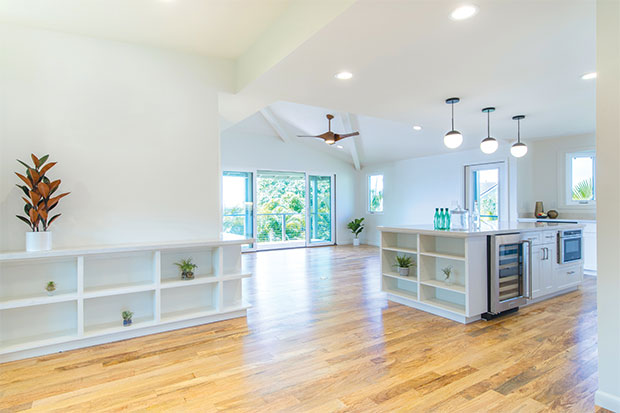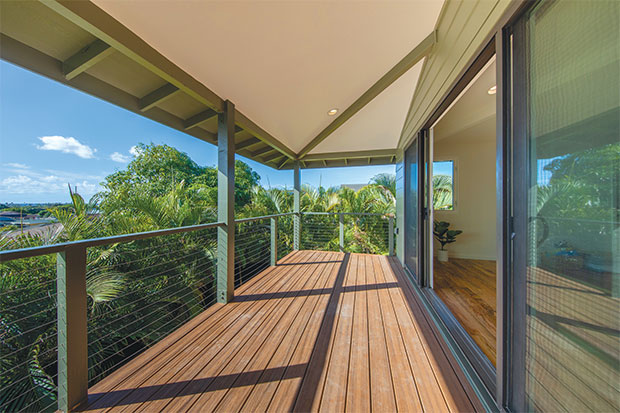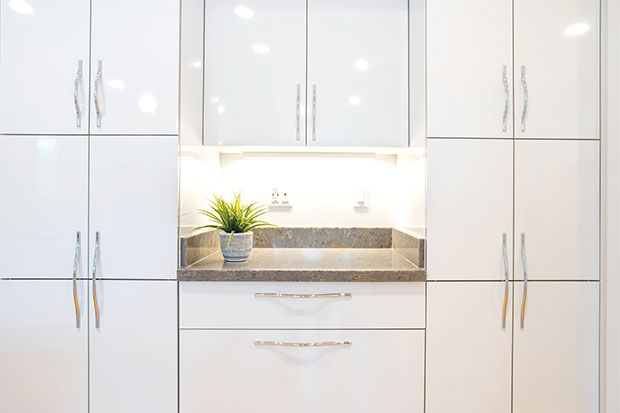As you plan your new home construction or renovation, you’ll likely check out the latest design magazines and websites for inspiration and ideas.
Inspiration is wonderful, but as Malia Yee of Graham Builders tells clients, it’s wise to be cautious about embracing hot design trends. Over the years, the lead designer for the Honolulu design/build firm says she has steered dozens of clients from faddish styles she knew they’d regret.
“If it looks trendy, it is trendy!” declares Yee. “Outdated trends are the quickest way to date a home.”
COLORS
Remember the neon yellows and teals from the 1980s that gave way to the subdued, grunge-influenced shades of the ’90s?
“Most recently, the popular trend was gray ‘everything’— floors, wall paint, carpet and tile,” recalls Yee. “Colors can be synonymous with certain eras.”
Avoid wallpaper and murals; instead, consider simple faux finishes and painted patterns. And remember, neutral palettes and their variations can be both elegant and calming.
“Residential finishes are leaning more toward beige these days,” Yee suggests.
Finally, make sure you jettison old clutter. Getting rid of dusty knickknacks is the best way to show off the soothing shades of a lovely new room.
MATERIALS
Some building materials used in construction can rapidly date your home. If your residence still has floor-to-ceiling mirrors or redwood paneling, your design should include plans to remove and replace them.
Tile countertops, popular in the 1990s, are another example of outdated materials. Easily damaged and hard to sanitize, tile has given way to quartz, granite, marble, concrete, quartzite and even wood for popular countertop materials.
“Stick with natural materials as much as possible,” recommends Yee. “Think wood floors, natural stone (flooring, counters, accents), and limited plastic. Modern technology has provided look-alike alternatives that mimic natural materials really well.”
STRUCTURE
Home décor is an industry whose styles change every season, and architectural design itself changes with technology and the times.
In the 1990s, open concept living spaces became popular, with kitchens, living areas and dining spaces open for interaction. That trend continued for years — until 2020, when it became necessary for many families to work and learn at home.
These days, homeowners often opt for a flexible blend of private areas and open space. Multi-function rooms that serve as guest rooms, home offices, “classrooms” or workout spaces make good sense. And smart structural touches like higher ceilings and bigger windows that allow plenty of natural light are better investments than faddish fixtures that are costly and easily replaced.
Ultimately, though, any design strategies you choose should appeal to you.
“Trends come, go, and change at the whim of the industry,” says Yee. “Remember: colors, materials and styles you’re drawn to will endure beyond those trends.”
A leader in the design and construction of multi-generational homes and aging-in-place design, Graham Builders is the recipient of the Better Business Bureau of Hawaii Torch Award for ethics in small business. Their next free Building Your Home for Life seminar is scheduled for Saturday, July 9. Register now at grahambuilders.com or call 808-593-2808.
GRAHAM BUILDERS
CONTACT 808-593-2808
WEB grahambuilders.com
See more articles from: Graham Builders


